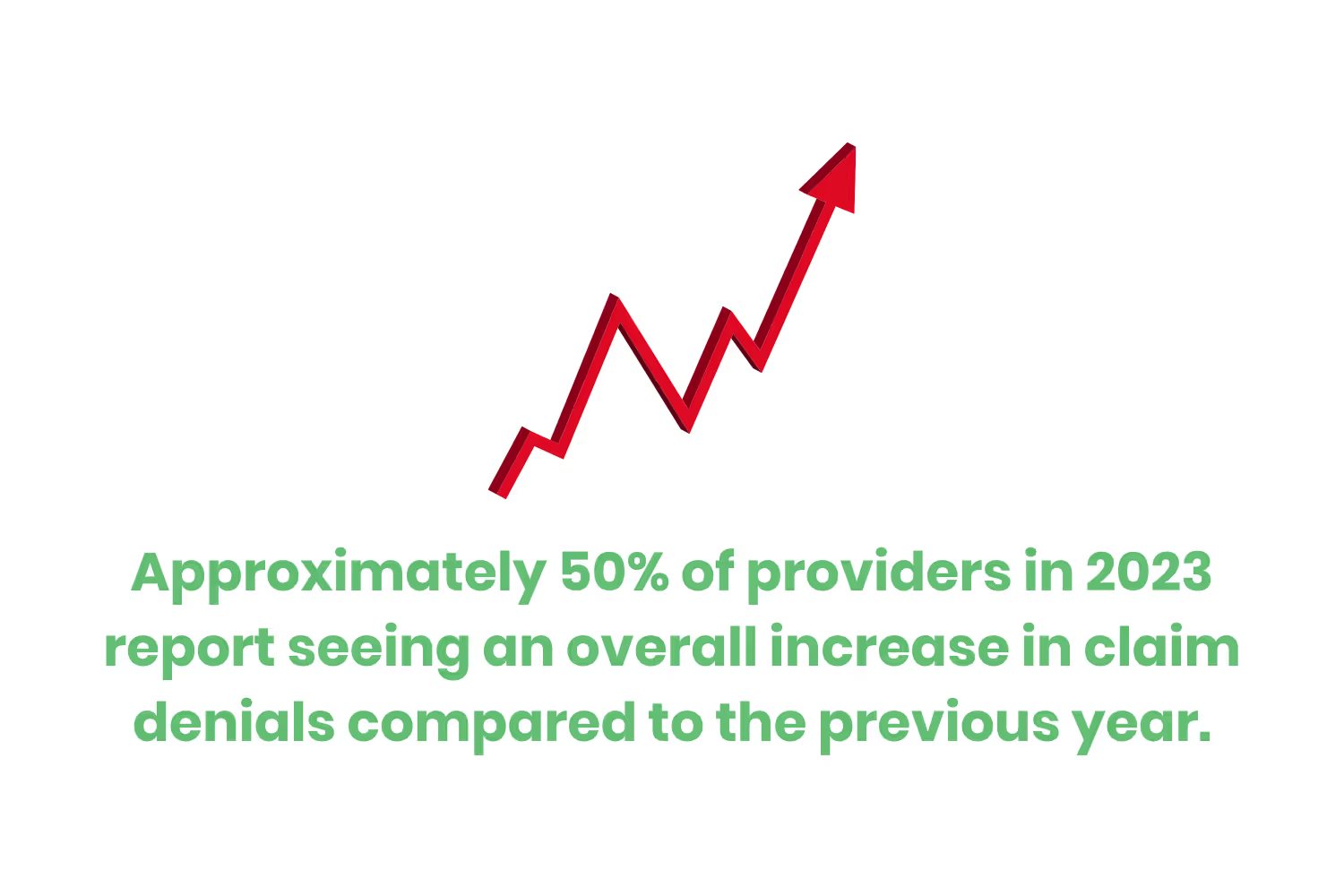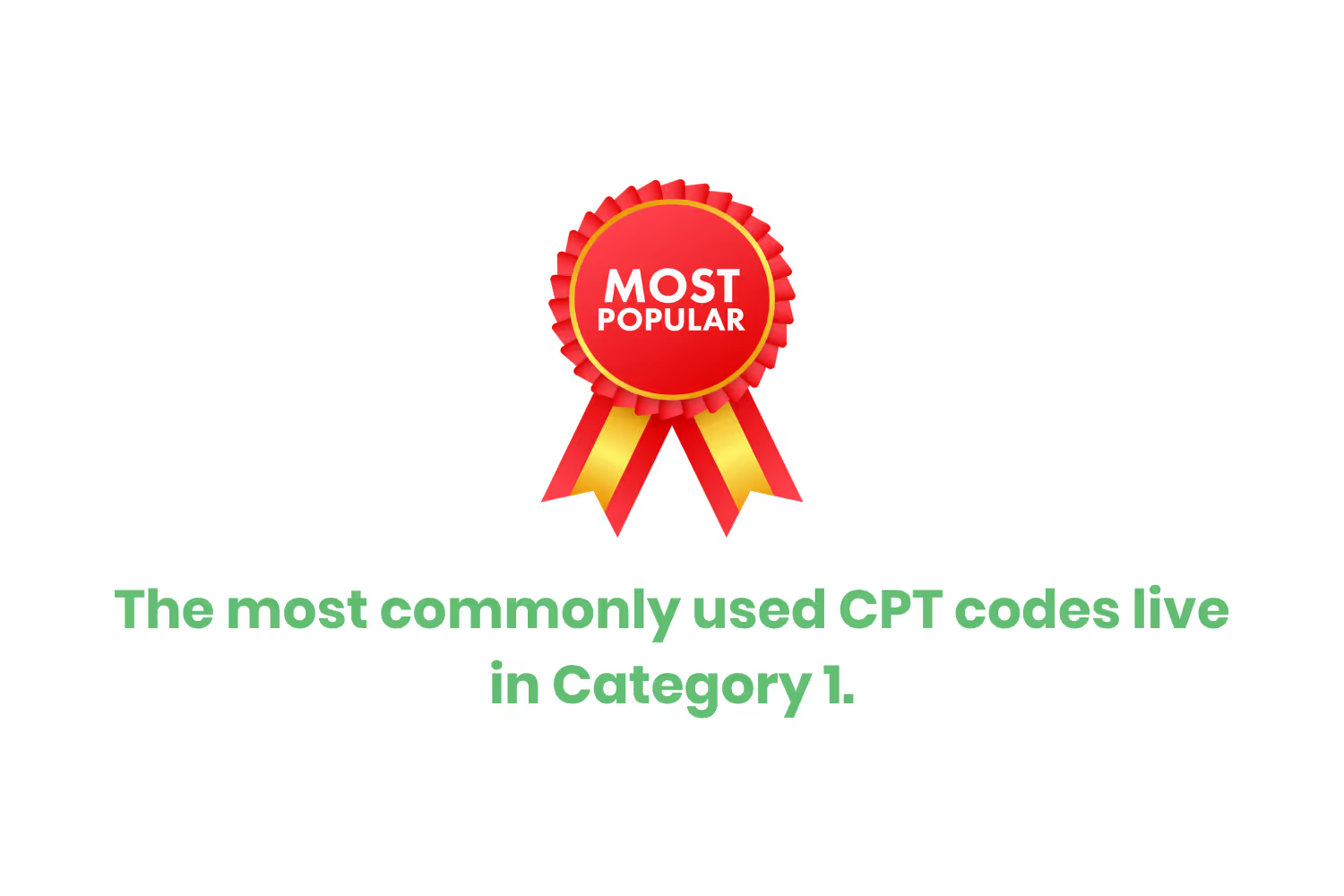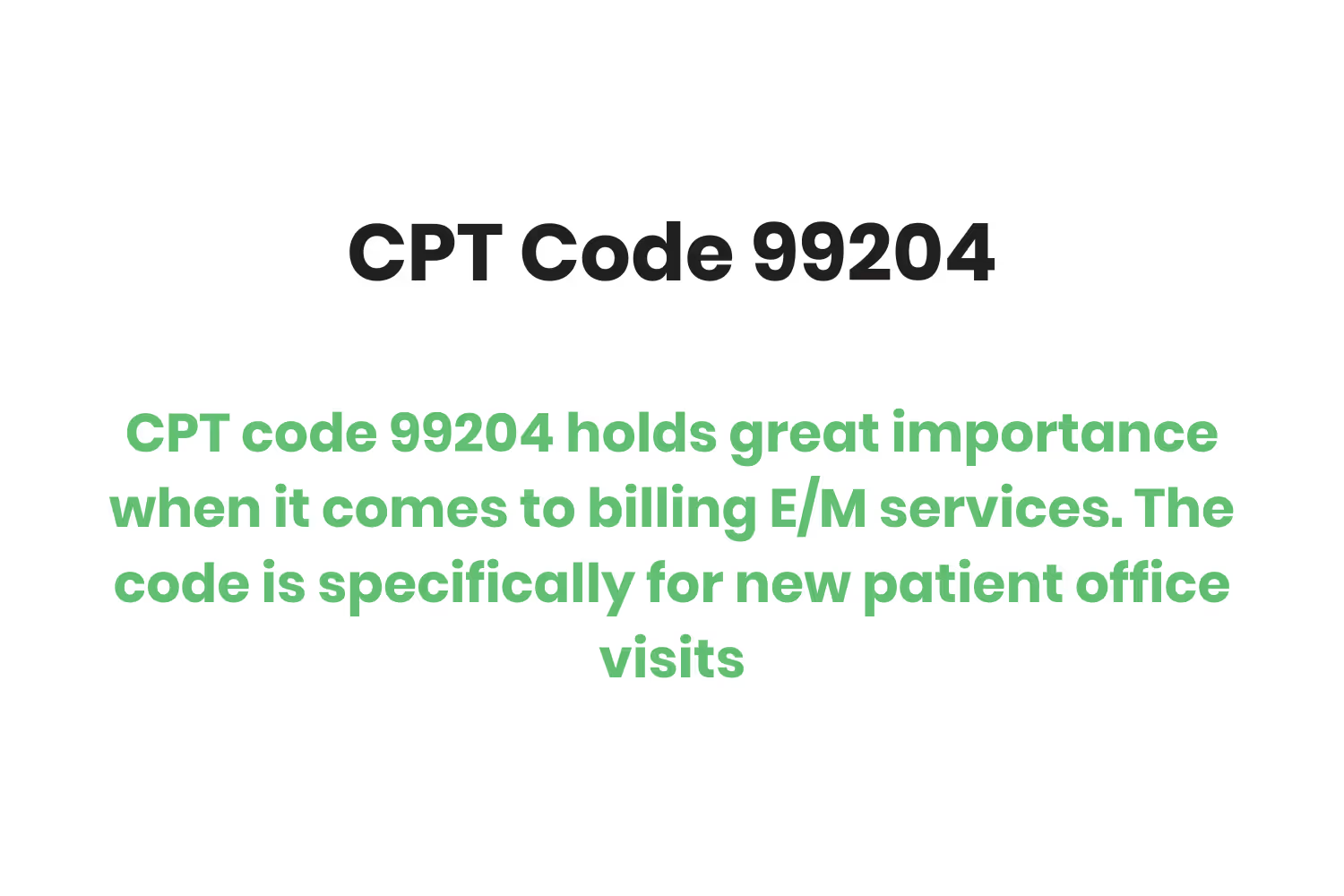CPT Code 99204: Everything You Need to Know
In this blog, We go over what exactly CPT codes are, what you need to know about CPT code 99204, and how it works. By understanding this section of coding in more detail, you will find it easier to deliver quality care to your patients while strengthening your financial health.

In a study conducted by AKASA, approximately 50% of providers in 2023 report seeing an overall increase in claim denials compared to the previous year. Such a high number of denials across the industry should raise alarms, especially for those hoping to grow financially. But what is it that still causes such a high percentage of denials from payers?
The mistakes range from lack of proper documentation to missing or incorrect information. Another avoidable mistake falls under the category of the medical coding itself. After all, utilizing the correct codes means payers are better able to understand what services healthcare professionals are providing.

The standardized language of medical coding, upon first look, might seem daunting. However, breaking it down by section makes everything a little less intimidating. So, that’s what I am doing for you today!
For billing documentation to meet coding standards, one of the most common codes you will come across are Current Procedural Terminology (CPT) codes. More specifically, we are talking about CPT code 99204. This code is an essential part of any medical professional’s toolbelt, and in this guide I will explain why.
We are going to go over what exactly CPT codes are, what you need to know about CPT code 99204, and how it works. By understanding this section of coding in more detail, you will find it easier to deliver quality care to your patients while strengthening your financial health.
What is a CPT Code?
Before we get into the fine details of CPT code 99204, let’s embark on a quick overview of what a CPT code is. Current Procedural Terminology (CPT) is a coding system that provides healthcare professionals a way to bill the medical services and procedures they provide.

In 1966, the American Medical Association (AMA) instilled this standardized coding system in hopes of streamlining and organizing medical billing procedures. This universally accepted medical vocabulary contains not only terms but identifying codes as well. To this day, the AMA updates the list of CPT codes annually.
Consider that this nomenclature is useful when providing service information to both private and public insurance companies. These services might include laboratory, surgical, evaluation and management (E/M), and more. However, today we are going to focus on that “evaluation and management” bit. This is because CPT code 99204 plays a significant role in those services.
CPT Code Categories
CPT codes are an important aspect when it comes to healthcare billing, acting as the bridge of communication between healthcare professionals and payers. Healthcare professionals that should be familiar with this language include physicians, non-physician practitioners, hospitals, and outpatient settings just to name a few. There are different categories (and levels) to consider when billing CPT codes: Category 1, Category 2, and Category 3.
Category 1
This is the largest body of codes. In fact, the most commonly used CPT codes live in this category. These codes are typically 5 characters long and are set in numerical order, save for a few exceptions.
One of these exceptions includes resequenced codes. There are hundreds of these CPT codes, so the AMA clusters similar codes together. The addition of a resequenced code happens when the AMA introduces a new code to one of these clusters, but a sequential code is not available.

The second exception involves evaluation and management (E/M) codes. These CPT codes start with the number 9, however since they are the most often reported, the AMA lists them first. Here are the 6 main sections for Category 1 codes:
- Evaluation & Management.
- Anesthesia.
- Surgery.
- Radiology Procedures.
- Pathology and Laboratory Procedures.
- Medicine Services and Procedures.
Category 2
Category 2 codes are more supplemental than anything and consist of 4 numbers plus the letter F. Category 2 includes tracking and performance measurement codes which providers often assign in addition to Category 1 codes. Note that Category 2 codes are not used for reimbursement.

These CPT codes help providers deliver better healthcare by tracking specific patient information, such as whether someone uses tobacco or not. Category 2 code sections include:
- Composite Measures.
- Patient Management.
- Patient History.
- Physical Examination.
- Diagnostic/Screening Processes or Results.
- Therapeutic, Preventive, or Other Interventions.
- Follow-up or Other Outcomes.
- Patient Safety.
- Structural Measures.
- Non-measure Code Listing.
Category 3
Category 3 CPT codes are temporary codes. “Temporary” in this case suggests these codes will move out of this category (ideally), and get reassigned to category 1. These codes represent new technologies, services, and procedures. They can stay in category 3 for up to 5 years.

If services meet Category 1 criteria, they can move from Category 3 to that first category. Keep in mind the AMA can also remove codes from category 3 if they are not used enough. In that case, the code will still move to Category 1, but will now be an “unspecified procedure” code. The criteria to reassign these codes to Category 1 include:
- FDA approval.
- Evidence that the procedure is widely used by providers.
- Evidence that the procedure is effective.
The AMA releases new or revised category 3 codes semiannually, in January and July.
CPT Code 99204
So now that we have discussed all 3 CPT categories, let’s focus on a code from one of the most common category 1 clusters. As I said, CPT code 99204 holds great importance when it comes to billing E/M services. The code is specifically for new patient office visits. Some may get this confused with CPT code 99214, which is for established patients only. Differentiating between a new patient and an established patient is important for this reason.
According to the CPT definition, a new patient is someone who has not received medical service from a healthcare professional within three years. This includes other physicians they’ve seen within the same group practice. So, on the other hand, we know that an established patient is one who has received medical treatment in the past three years.
For a level-4 visit to be a 99204 CPT code, not only must the patient be new, but the encounter needs to include a comprehensive history as well as a physical exam. A comprehensive history should include:
- Patient's present illness.
- Past medical history.
- Family history.
- Social history.
- A review of systems.

The physical exam required should go over multiple organ systems or, on the other handle, a single complex system.
These requirements are necessary for the physician to continue with an appropriate treatment plan, based on the data collected during the visit. The new patient’s presenting problems are typically moderate to high in severity and the visit itself takes 45-59 minutes to complete. Considerations for the number of diagnoses, management options, data reviewed, and risk are necessary.
If you are still not feeling confident in knowing what CPT code 99204 means, consider the following patient description example. A new adult patient visiting an office, or outpatient facility, for an acute illness or injury that requires medical management. The patient may even be eligible for surgical treatment.
The 99204 CPT code may also cover additional services including, counseling and care coordination with other doctors and ordering diagnostic tests.
There are a few notable benefits when it comes to this CPT code. 99204 offers flexibility for time spent with patients. Piggybacking off of that, more time with patients means having the ability to offer the most comprehensive care. Better care, better outcome of a diagnosis!
More on Medical Evaluation and Management (E/M)
E/M services act as a cornerstone of the medical coding and billing process. These are some of the most used codes in category 1, serving as a way to document the assessment, diagnosis, and treatment of patients.
By structuring and streamlining patient encounters, healthcare professionals can thus provide quicker and more accurate medical care. E/M services are commonly used in outpatient office visits, hospital visits, consultations, and preventive medicine.
Each E/M service gets categorized into levels, depending on the complexity of the visit. These levels of coding will depend on the amount of time a healthcare professional spends with a patient, as well as the level of medical decision-making (MDM) required. For example, due to the time frame allotted for CPT code 99204 being 45-59 minutes, this allows for a level 4 code.
Conclusion
With medical knowledge and technology steadily advancing, CPT codes must do the same. The AMA entrusts the addition, deletion, and revision of CPT code to the CPT Editorial Panel. Both entities together must constantly manage this extensive list of descriptive codes - to make sure the language between providers and payers advances as well.
Without a universal language to describe the data and patient information gathered during an exam, medical billing would be a nightmare. Being able to easily communicate with insurance companies means you are able to (just as easily) collect your revenue. Staying up to date with CPT codes, especially those most commonly used such as 99204, is an effective way to avoid pesky claim denials and financial burdens.
Emphasize your product's unique features or benefits to differentiate it from competitors
In nec dictum adipiscing pharetra enim etiam scelerisque dolor purus ipsum egestas cursus vulputate arcu egestas ut eu sed mollis consectetur mattis pharetra curabitur et maecenas in mattis fames consectetur ipsum quis risus mauris aliquam ornare nisl purus at ipsum nulla accumsan consectetur vestibulum suspendisse aliquam condimentum scelerisque lacinia pellentesque vestibulum condimentum turpis ligula pharetra dictum sapien facilisis sapien at sagittis et cursus congue.
- Pharetra curabitur et maecenas in mattis fames consectetur ipsum quis risus.
- Justo urna nisi auctor consequat consectetur dolor lectus blandit.
- Eget egestas volutpat lacinia vestibulum vitae mattis hendrerit.
- Ornare elit odio tellus orci bibendum dictum id sem congue enim amet diam.
Incorporate statistics or specific numbers to highlight the effectiveness or popularity of your offering
Convallis pellentesque ullamcorper sapien sed tristique fermentum proin amet quam tincidunt feugiat vitae neque quisque odio ut pellentesque ac mauris eget lectus. Pretium arcu turpis lacus sapien sit at eu sapien duis magna nunc nibh nam non ut nibh ultrices ultrices elementum egestas enim nisl sed cursus pellentesque sit dignissim enim euismod sit et convallis sed pelis viverra quam at nisl sit pharetra enim nisl nec vestibulum posuere in volutpat sed blandit neque risus.

Use time-sensitive language to encourage immediate action, such as "Limited Time Offer
Feugiat vitae neque quisque odio ut pellentesque ac mauris eget lectus. Pretium arcu turpis lacus sapien sit at eu sapien duis magna nunc nibh nam non ut nibh ultrices ultrices elementum egestas enim nisl sed cursus pellentesque sit dignissim enim euismod sit et convallis sed pelis viverra quam at nisl sit pharetra enim nisl nec vestibulum posuere in volutpat sed blandit neque risus.
- Pharetra curabitur et maecenas in mattis fames consectetur ipsum quis risus.
- Justo urna nisi auctor consequat consectetur dolor lectus blandit.
- Eget egestas volutpat lacinia vestibulum vitae mattis hendrerit.
- Ornare elit odio tellus orci bibendum dictum id sem congue enim amet diam.
Address customer pain points directly by showing how your product solves their problems
Feugiat vitae neque quisque odio ut pellentesque ac mauris eget lectus. Pretium arcu turpis lacus sapien sit at eu sapien duis magna nunc nibh nam non ut nibh ultrices ultrices elementum egestas enim nisl sed cursus pellentesque sit dignissim enim euismod sit et convallis sed pelis viverra quam at nisl sit pharetra enim nisl nec vestibulum posuere in volutpat sed blandit neque risus.
Vel etiam vel amet aenean eget in habitasse nunc duis tellus sem turpis risus aliquam ac volutpat tellus eu faucibus ullamcorper.
Tailor titles to your ideal customer segment using phrases like "Designed for Busy Professionals
Sed pretium id nibh id sit felis vitae volutpat volutpat adipiscing at sodales neque lectus mi phasellus commodo at elit suspendisse ornare faucibus lectus purus viverra in nec aliquet commodo et sed sed nisi tempor mi pellentesque arcu viverra pretium duis enim vulputate dignissim etiam ultrices vitae neque urna proin nibh diam turpis augue lacus.




